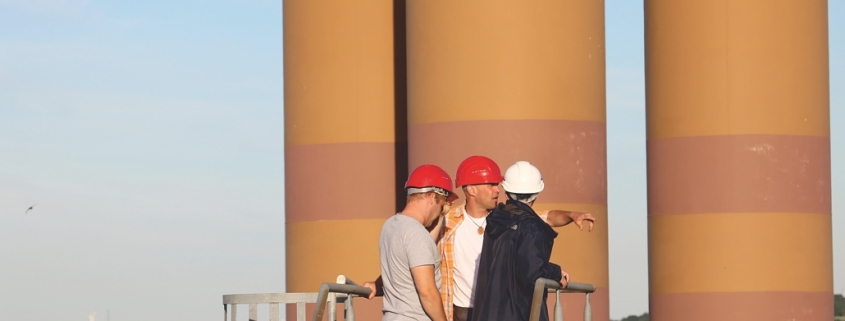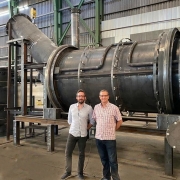Substantial Investments in New Projects Spur Growth
The South African waste management industry is depicting continual growth, the market research store Research and Markets (www.researchandmarkets.com) informed as it introduced its new report “Middle East And Africa Waste-To-Energy (WTE) Market 2019-2027”.
According to the information, the industry in the Middle East and Africa (MEA) region would grow with a CAGR (compound annual growth rate) of 4.88 percent in the forecast duration from 2019-2027. The South African waste management industry is one of the most efficient waste management industries in the continent of Africa, the research store judged. In 2018, South Africa generated 42 million cubic meters of waste, most of it was discarded in landfills. Recycling waste has become necessary in the country, as the poor recycling rate (around 10 percent) has resulted in the reduction of the area available for landfilling. “Waste-to-energy management in South Africa would provide the country with significant benefits,” Research and Markets wrote. “For instance, with the country increasingly falling short of space for landfilling, WtE management proves to be an excellent alternative to landfills.”
The “first large-scale WtE conversion plant in Africa” was launched in January 2017, in Cape Town’s Athlone, which was built five years after extensive planning. The waste contractor Waste Mart and Clean Energy Africa (CEA) collaborated for the development of this project worth 400 million South African Rand (about 28 million US-Dollar), which is owned and run by Clean Energy Africa’s subsidiary, New Horizons Energy. “By implementing this project, Cape Town has moved from being an electricity distributor to an electricity generator, reaching towards its goals of having 20 percent renewable energy in its energy mix,” the information said. As reported by African media, the facility is designed to convert 500 tons per day into renewable energy.
Another solution to generate electricity is to be realized in Johannesburg. The Climate Neutral Group captures methane gas from five municipal landfill sites around Johannesburg, which is converted into electricity via a network of pipes in the landfill. The gas is pumped in a chimney where it is combusted into harmless emissions. This is the project’s first phase, the company underlined on its homepage. The project’s next phase would see the installation of five generators “that will channel the gas as fuel for electricity generation. The generators will transfer the energy to the municipal distribution grid.” When completed, the project would produce 19MW of electricity – enough to power 16,500 medium-sized houses. “This will make it the biggest landfill waste-to-energy project in South Africa,” the Climate Neutral Group is convinced.
The requirement exists
“As Europe’s WtE market approaches saturation, Africa is an obvious next step”, Cecily Davis – head of the Africa Group at law firm Fieldfisher and an engineering, procurement and construction specialist – wrote in the monthly magazine “The Africa Report” in October last year. Energy demand in the continent is predicted to rise by 127 percent by 2040, she informed, referring to BP’s Energy Outlook 2019. Electricity demand is expected to rise three times, and the share of renewables in Africa’s fuel mix should grow from one percent today to 16 percent over the same period. However, there are also significant challenges in developing WtE projects in countries with little or no organized waste collection, Cecily Davis noted. “This is compounded by a scarcity of finance and, in some countries, political instability.”
In 2018, the first facility in Ethiopia was inaugurated. The plant is built on the Koshe landfill site located on the outskirts of the capital Addis Ababa, the online publication africanews.com reported. It was designed to take 1,400 tons of waste daily (which comes up to about 80 percent of waste generated by Addis Ababa) and to supply the capital with 30 percent household electricity needs.
“Some biogas facilities have been up and running for a few years, like the food-waste-fed Ketu Ikosi Biogas Project in Lagos, Nigeria, and Tropical Power’s 2.4 MW Gorge Farm Anaerobic Digestion Power Plant in Naivasha, Kenya, which runs on vegetable waste,” Mrs. Davis informed.
In her opinion, there are several opportunities for Waste-to-Energy in Africa:
- Rapid urbanization has created megacities (with populations of more than 10 million) across the continent including Cairo, Kinshasa and Lagos in Nigeria. According to the United Nations, Luanda, Dar es Salaam and Johannesburg will reach this status by 2030.
- The United Nation’s Sustainable Development Goal 7 focuses on delivering universal access to affordable, clean energy, “a policy that favors WtE in appropriate contexts”.
- Countries are changing their attitude to landfill – and governments consider more sustainable options for waste management.
- “If uninterrupted supplies of feedstock can be guaranteed, WtE does not have the intermittency issues that hinder solar, wind and even hydro energy and is therefore technically more reliable than other forms of renewable energy”.
According to the expert, a “bonus feature of WtE projects is their capacity to generate revenue from by-products, such as metals sorted from the waste and residual products, which, depending on the type of feedstock used, can be made into construction materials, agricultural feed or fertilizer”.
Furthermore, the moisture content of waste in African countries would present opportunities to harvest power from excess steam. WtE operators could also collect the water extracted from the waste during the drying process, for human or industrial consumption.
(GR12020, Page 46, Photo: Harald Heinritz / abfallbild.de)









